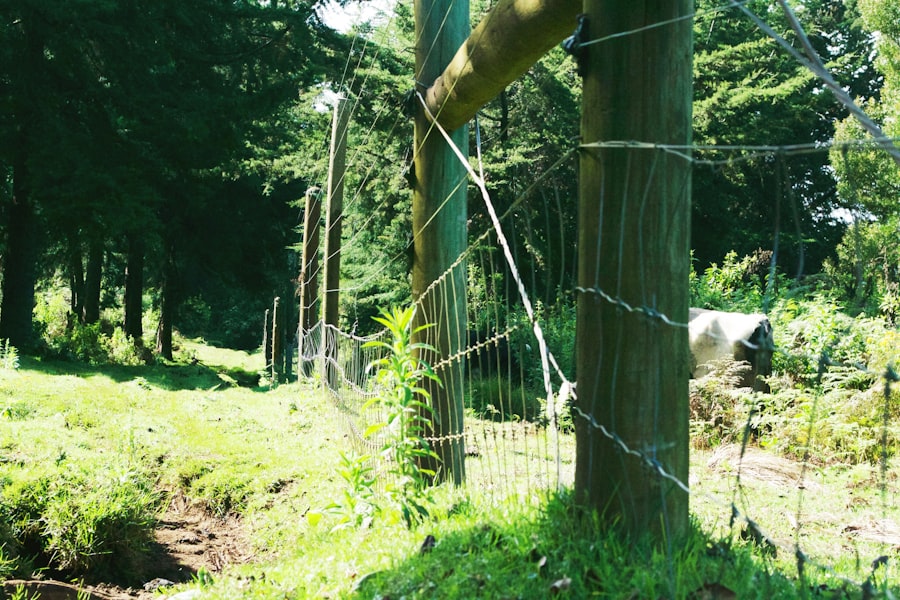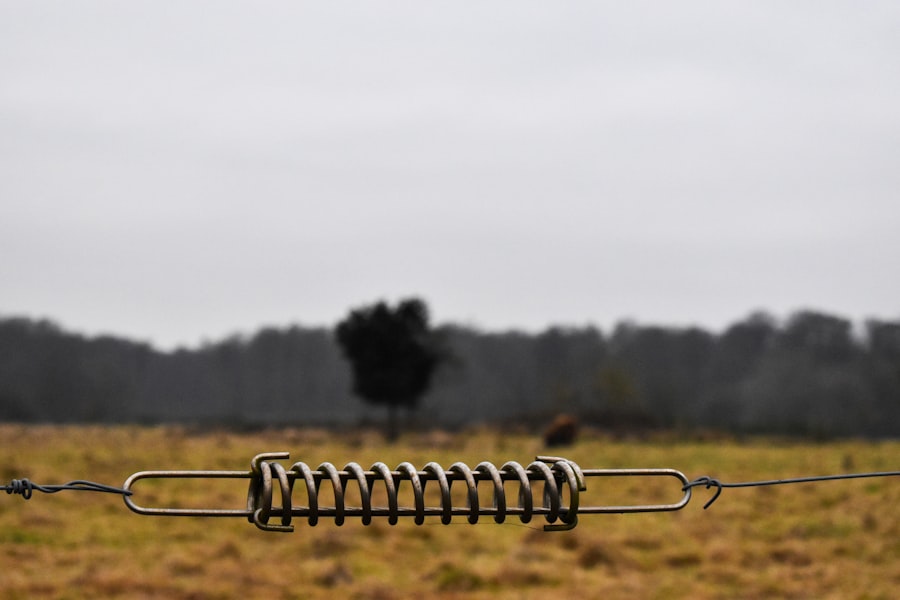When selecting fencing material for a chicken coop, several options are available. Chicken wire is a cost-effective and easily manipulated choice, but it may lack durability, especially in areas with predators. Hardware cloth, while more expensive, offers superior protection against predators.
The size of the openings in the fencing material is crucial, with smaller openings providing better predator protection. Some chicken owners opt for a combination of materials, using chicken wire for the main fencing and reinforcing vulnerable areas with hardware cloth. The optimal fencing material depends on individual requirements and budget constraints.
Fence height is another critical consideration, as chickens can fly short distances. Selecting a fencing material tall enough to prevent chickens from flying over is essential. Some chicken owners choose to add a roof to their coop for additional security.
The overall strength, durability, and resistance to rust and corrosion of the fencing material are also important factors to consider. By carefully evaluating these aspects, chicken owners can select a fencing material that provides adequate protection for their flock and ensures peace of mind.
Table of Contents
- 1 Securing the bottom of the fence
- 2 Regularly inspecting the fence for damage
- 3 Providing adequate space and enrichment within the fenced area
- 4 Using deterrents to discourage chickens from trying to escape
- 5 Training chickens to stay within the fenced area
- 6 Seeking professional advice for persistent escape attempts
- 7 FAQs
- 7.1 What are some effective ways to keep chickens in their fence?
- 7.2 What type of fence is best for keeping chickens contained?
- 7.3 How can I prevent chickens from digging under the fence?
- 7.4 What are some ways to discourage chickens from flying over the fence?
- 7.5 Are there any additional measures I can take to keep chickens in their fence?
Key Takeaways
- Choose a fencing material that is sturdy and appropriate for the size and strength of your chickens
- Secure the bottom of the fence to prevent chickens from digging underneath or squeezing through gaps
- Regularly inspect the fence for any damage or weak spots that could allow chickens to escape
- Provide adequate space and enrichment within the fenced area to reduce the likelihood of chickens trying to escape
- Use deterrents such as visual barriers or noise makers to discourage chickens from attempting to escape
- Train chickens to stay within the fenced area using positive reinforcement and rewards
- Seek professional advice if chickens persistently attempt to escape despite efforts to secure the fenced area
Securing the bottom of the fence
Underground Fencing
One effective way to secure the bottom of the fence is by burying it underground. This will prevent predators from digging under the fence and gaining access to your chickens. It’s important to bury the fence at least 12 inches deep to ensure that it is secure.
Adding a Skirt
Additionally, you may want to consider adding a skirt to the bottom of the fence, which can be made from hardware cloth or other durable materials. This will further prevent predators from digging under the fence and provide an extra layer of protection for your chickens.
Alternative Methods
Another option for securing the bottom of the fence is to use concrete or paving stones. By placing these materials along the bottom of the fence, you can prevent predators from digging under it and gaining access to your chickens. Additionally, this method can help to prevent erosion and keep your coop area clean and tidy.
It’s important to regularly inspect the bottom of the fence for any signs of wear or damage, as this can compromise its effectiveness in keeping your chickens safe. By taking these steps to secure the bottom of the fence, you can ensure that your chickens are protected from predators and have a safe and secure environment to roam.
Regularly inspecting the fence for damage

Regularly inspecting the fence for damage is essential for maintaining a safe and secure environment for your chickens. Over time, fences can become damaged due to weather, wear and tear, or even attempts by predators to gain access to your coop. It’s important to inspect the entire length of the fence for any signs of damage, such as holes, rust, or loose wires.
Additionally, you should pay close attention to areas where the fence meets the ground, as these are often vulnerable to damage from digging predators or erosion. By regularly inspecting the fence for damage, you can identify and address any issues before they compromise the safety of your chickens. In addition to visually inspecting the fence, it’s important to physically test its strength and stability.
You can do this by gently pushing on different sections of the fence to check for any weak spots or areas that may need reinforcement. It’s also important to check any gates or openings in the fence for signs of wear or damage, as these are often vulnerable points that predators may target. By regularly inspecting the fence for damage, you can ensure that it remains effective in keeping your chickens safe and secure.
Additionally, addressing any issues promptly can help to prevent more extensive damage and costly repairs in the future.
Providing adequate space and enrichment within the fenced area
Providing adequate space and enrichment within the fenced area is essential for keeping your chickens happy and healthy. Chickens need plenty of space to roam and explore, so it’s important to ensure that your fenced area is large enough to accommodate their needs. A general rule of thumb is to provide at least 10 square feet of space per chicken, but more space is always better if possible.
Additionally, it’s important to provide a variety of enrichment activities within the fenced area, such as perches, dust baths, and toys. This will help to keep your chickens mentally stimulated and prevent boredom, which can lead to behavioral issues. Another important consideration when providing space and enrichment within the fenced area is ensuring that it is safe and secure.
This means checking for any potential hazards, such as toxic plants or sharp objects, and removing them from the area. It’s also important to provide adequate shelter within the fenced area, such as a coop or sheltered area where your chickens can rest and seek protection from the elements. By providing adequate space and enrichment within the fenced area, you can ensure that your chickens are happy and healthy, which will ultimately reduce their desire to escape.
Using deterrents to discourage chickens from trying to escape
Using deterrents to discourage chickens from trying to escape can be an effective way to prevent them from venturing outside of their fenced area. One common deterrent is using visual barriers, such as hanging strips of shiny material or placing scarecrows near the perimeter of the fenced area. These visual barriers can help to confuse and deter chickens from attempting to fly over or squeeze through the fence.
Another effective deterrent is using natural repellents, such as planting strong-smelling herbs or flowers around the perimeter of the fenced area. Chickens have a strong sense of smell, so these natural repellents can help to discourage them from trying to escape. Another option for using deterrents is installing motion-activated sprinklers or sound devices near the perimeter of the fenced area.
These devices can startle chickens when they approach the fence, which can help to deter them from trying to escape. Additionally, you may want to consider using physical barriers, such as adding a second layer of fencing or installing netting over the top of the fenced area. By using deterrents to discourage chickens from trying to escape, you can help to keep them safe and secure within their designated area.
Training chickens to stay within the fenced area

Positive Reinforcement Methods
Training chickens to stay within the fenced area can take time and patience, but it can be an effective way to prevent them from trying to escape. One method for training chickens is using positive reinforcement, such as offering treats when they stay within their designated area. You can also use a clicker or whistle to signal when they are behaving appropriately and reward them with treats or praise.
Designated Feeding Area and Negative Reinforcement
Additionally, you may want to consider using a designated feeding area within the fenced space, which can help to encourage chickens to stay within that area. Another method for training chickens is using negative reinforcement, such as gently herding them back into their designated area when they attempt to escape.
Consistency and Patience are Key
It’s important not to use force or punishment when training chickens, as this can cause stress and fear. Instead, focus on gently guiding them back into their designated area and rewarding them when they comply. Consistency is key when training chickens, so it’s important to be patient and persistent in reinforcing boundaries within the fenced area.
Seeking professional advice for persistent escape attempts
If you have tried various methods to prevent your chickens from escaping and have not had success, it may be time to seek professional advice. A professional animal behaviorist or poultry expert can provide valuable insight into why your chickens may be attempting to escape and offer tailored solutions for addressing this behavior. They can assess your current setup and provide recommendations for improving your fencing, enrichment activities, and training methods.
Additionally, seeking professional advice can help you identify any underlying issues that may be contributing to your chickens’ desire to escape, such as overcrowding or lack of stimulation. By working with a professional, you can develop a comprehensive plan for addressing persistent escape attempts and creating a safe and secure environment for your chickens. Remember that every chicken is unique, so it’s important to be patient and open-minded when seeking professional advice for persistent escape attempts.
In conclusion, keeping chickens safe within a fenced area requires careful consideration of fencing materials, securing methods, regular inspections, space provision, deterrents usage, training techniques, and seeking professional advice when necessary. By taking these steps, you can create a safe and secure environment for your chickens while also promoting their health and well-being.
If you’re looking for tips on how to keep chickens in their fence, you might also be interested in learning about the benefits of using a snaplock chicken coop. This article from Poultry Wizard discusses the advantages of using a snaplock chicken coop and how it can help keep your chickens safe and secure. Check it out here.
FAQs
What are some effective ways to keep chickens in their fence?
Some effective ways to keep chickens in their fence include using a secure and sturdy fence, adding a barrier to prevent digging, and providing enough space and enrichment within the fenced area to discourage escape attempts.
What type of fence is best for keeping chickens contained?
A sturdy and secure fence, such as a wire mesh or hardware cloth, is best for keeping chickens contained. It should be at least 6 feet tall and buried at least 12 inches into the ground to prevent digging.
How can I prevent chickens from digging under the fence?
To prevent chickens from digging under the fence, you can bury the bottom of the fence at least 12 inches into the ground or add a barrier such as rocks or paving stones along the perimeter to discourage digging.
What are some ways to discourage chickens from flying over the fence?
To discourage chickens from flying over the fence, you can clip their flight feathers, provide enough space and enrichment within the fenced area to discourage escape attempts, and consider adding a roof or netting to the fenced area.
Are there any additional measures I can take to keep chickens in their fence?
In addition to a secure fence, you can also consider using electric fencing, installing motion-activated deterrents, and regularly inspecting the fence for any signs of wear or damage to ensure it remains effective in keeping chickens contained.
Meet Walter, the feathered-friend fanatic of Florida! Nestled in the sunshine state, Walter struts through life with his feathered companions, clucking his way to happiness. With a coop that’s fancier than a five-star hotel, he’s the Don Juan of the chicken world. When he’s not teaching his hens to do the cha-cha, you’ll find him in a heated debate with his prized rooster, Sir Clucks-a-Lot. Walter’s poultry passion is no yolk; he’s the sunny-side-up guy you never knew you needed in your flock of friends!







